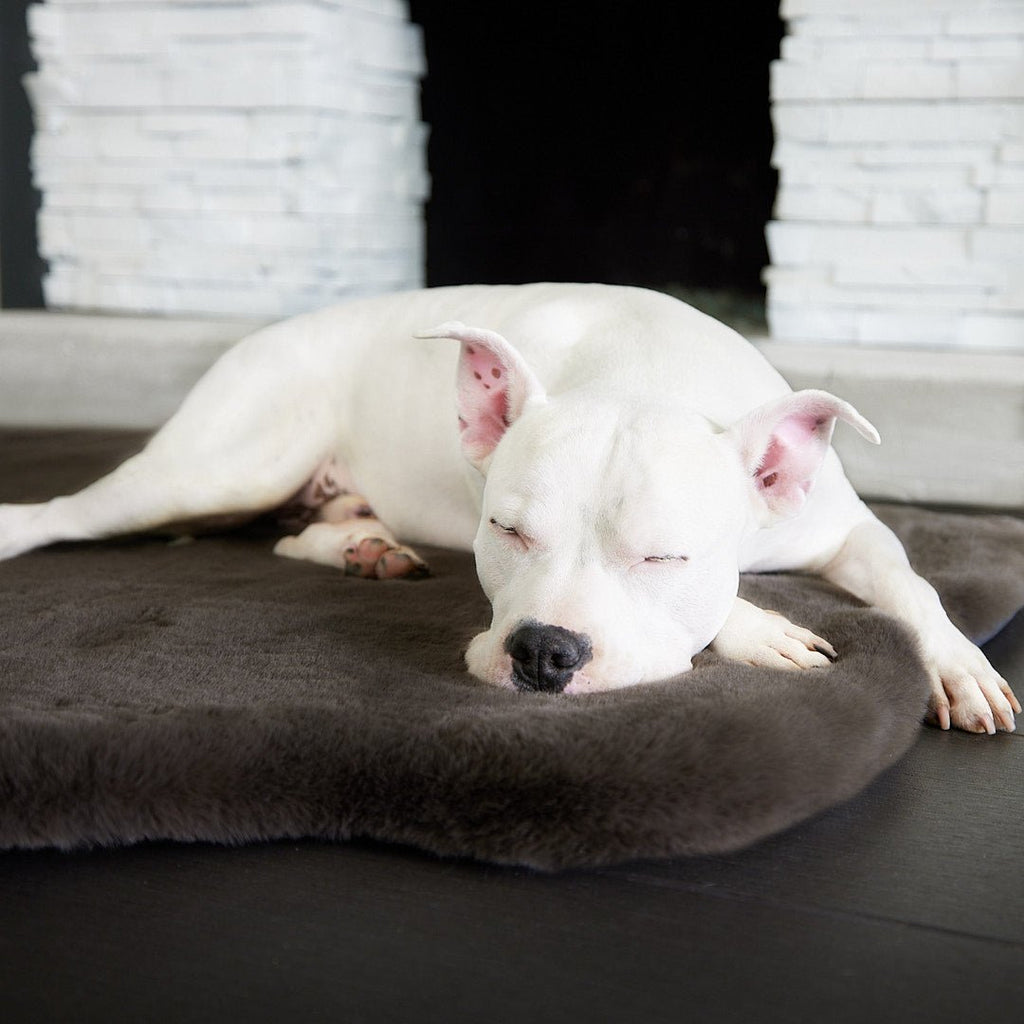Have you ever wondered where your furry companion prefers to rest – on a soft, cozy bed or on the cool, firm floor? In the ever-evolving world of pet pampering, ensuring their comfort is of utmost importance. It’s a question that has puzzled dog owners for ages, and in this article, we will explore the fascinating topic of a dog’s preference for beds or the floor. From their natural instincts to their individual quirks, we will delve into the factors that influence their sleeping preferences, unraveling a mystery that may shed light on our beloved canine’s unique perspectives. So, let us embark on this journey to uncover what truly lies beneath those wagging tails and watchful eyes.
The Preference of Dogs: Beds or the Floor?
When it comes to deciding between a cozy bed or the cool floor, dogs often show a preference that can puzzle their owners. While some may think that dogs would naturally opt for the comfort of a bed, others argue that the floor can offer unique benefits. In this article, we will explore the different factors that influence a dog’s preference, including comfort and support, temperature considerations, hygiene and cleanliness, as well as the possible psychological and instinctual reasons behind their choice.
Factors influencing a dog’s preference
Several factors can come into play when determining a dog’s preference for a bed or the floor. One of the most significant factors is the individual dog’s comfort and support needs. Dogs, like humans, have unique body shapes and sizes, which may impact their preference for a certain sleeping surface. Additionally, factors such as age, health conditions, and past experiences can also influence their preference.
Comfort and support in dog beds
Dog beds are specially designed to provide the comfort and support that dogs need. Many beds come with orthopedic features, such as memory foam or supportive bolsters, which can alleviate pressure points and provide relief for joints. The soft and plush materials used in dog beds can also create a cozy and warm sleeping environment. These features make dog beds an attractive option for dogs who prioritize comfort and enjoy snuggling into a soft surface.
Exploring the appeal of the floor
Despite the enticing features of dog beds, some dogs may still prefer the unfurnished floor. One potential reason for this preference is the coolness and temperature regulation offered by the floor’s surface. Dogs, especially those with thick fur or in warmer climates, may find the coolness of the floor more comfortable. Additionally, the floor allows dogs to spread out and stretch their bodies, giving them a sense of freedom and flexibility that dog beds may not provide.
Temperature considerations
Temperature plays a significant role in a dog’s preference for a bed or the floor. Dogs have different temperature preferences, and their fur coats do not provide the same insulation as human clothing. In colder weather, a bed can offer essential warmth and insulation to keep a dog comfortable. However, in hotter climates, the cool floor can provide necessary relief from the heat. It is important for dog owners to consider the ambient temperature and their individual dog’s needs when deciding on a sleeping surface.
Hygiene and cleanliness
Another factor that can influence a dog’s preference is hygiene and cleanliness. While most dog beds come with washable covers, they may still collect dirt, fur, and odors over time. Some dogs, particularly those who are prone to allergies or have sensitive skin, may prefer the cleanliness and freshness of the floor, which can be easily maintained. Regular cleaning and maintenance of dog beds can help mitigate these concerns and ensure a hygienic sleeping environment.
Health benefits of dog beds
Apart from providing comfort and support, dog beds also offer several health benefits. The orthopedic features in certain beds can promote better joint alignment and alleviate pressure on a dog’s bones and joints. This can be especially beneficial for older dogs or those with orthopedic conditions. Additionally, elevated beds or raised platforms can help dogs with arthritis or mobility issues get in and out of bed more easily, reducing strain on their muscles and joints.
Possible reasons dogs choose the floor
While dog beds offer numerous advantages, there are some possible reasons why dogs may choose the floor over a bed. Psychological factors could play a role, as some dogs may simply prefer the open space and freedom of the floor. Dogs are den animals by nature, and the enclosed and elevated design of dog beds may not align with their instinctual preferences. Additionally, some dogs may have learned behaviors or associations that make them more comfortable sleeping on the floor.
Psychological factors
The psychological well-being of a dog can also impact their preference for a bed or the floor. Dogs with anxiety or fear may find the open layout of the floor more comforting, as it allows them to maintain a sense of control over their surroundings. On the other hand, dog beds can provide a sense of security and comfort, especially if they have been positively associated with relaxation and rest through training and conditioning.
Natural instincts
Dogs have inherited many of their behaviors and preferences from their wild ancestors, and their choice of sleeping surface may be influenced by natural instincts. Wild canines often sleep on the ground or in dens, where they can remain alert to potential dangers. While domesticated dogs may not face the same threats, these instincts may still influence their preference for the floor, as it provides a more natural and instinctually familiar sleeping environment.
Puppy training and habits
Puppy training and early habits can also contribute to a dog’s preference for the floor or a bed. If a puppy is initially trained to sleep on the floor or prohibited from getting on furniture, they may develop a preference for the floor as they grow older. Conversely, if a puppy is introduced to a comfortable bed early on and allowed to sleep on furniture, they may show a preference for beds as they associate them with positive experiences and comfort.
In conclusion, the preference of dogs for beds or the floor can be influenced by various factors, including comfort, temperature, hygiene, and psychological factors. While dog beds offer comfort, support, and numerous health benefits, some dogs may still prefer the coolness and freedom of the floor due to natural instincts or learned behaviors. Ultimately, understanding a dog’s individual needs and preferences can help owners provide the best sleeping environment for their furry friends.









